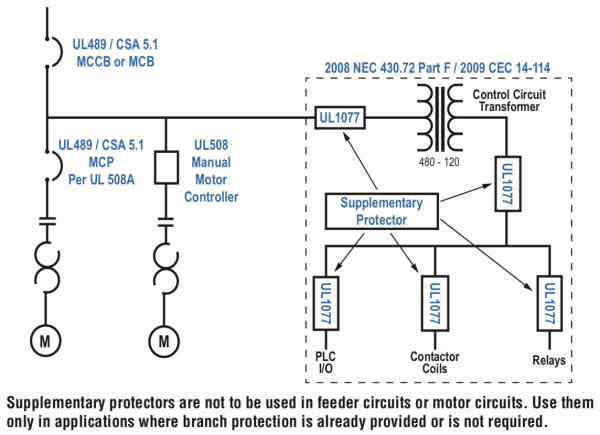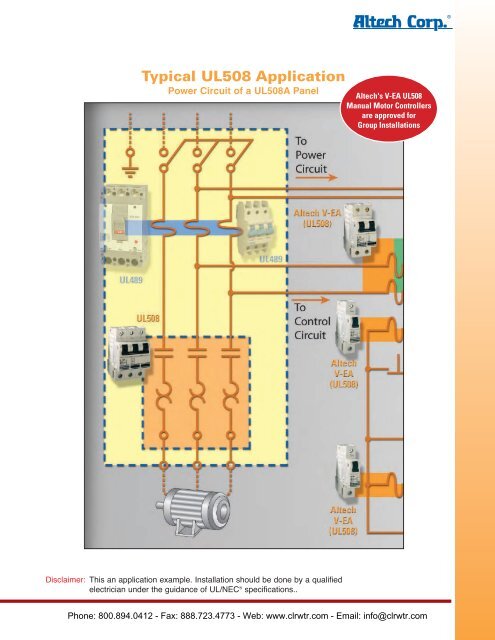
Secondary (load side) protection can be provided by a supplementary protector. It may also have supplemental protection on the line side. The circuit primary (line side) must have branch circuit protection (circuit breaker or fuse). Also, it can be a control circuit on the load side of power limiting supply, such as a transformer.


Motor Branch Circuit: The portion of the electrical distribution system that extends beyond the final branch circuit overcurrent protective device.Feeder Circuit: All circuit conductors between the service equipment, the source of a separately derived system or another power supply source, and the final branch-circuit overcurrent device.The key to selecting the type of protection is the type of circuit being protected.Ĭircuit breakers are required for the following circuits: UL 508A: Circuit Protection in Industrial Control Panels It may also include the words “Supplementary Protector,” which is very different from a Listing Mark. Approved devices receive a Component Recognition Mark, which is the mirror-image reverse of UR. These devices are tested by UL in combination with the equipment being protected. They provide overcurrent and overvoltage equipment protection but limited short-circuit protection, and are always located after the branch circuit protection. Sometimes located within an appliance or other electrical equipment, they may have a device to manually open and close the circuit. This standard defines a supplementary protector as a manually resettable device designed to open the circuit automatically on a pre-determined value of time versus current or voltage. UL tests these devices for proper operation, and certifies compliance with the standard by assigning a Listing Mark that identifies the device as a “Listed Circuit Breaker.” Supplementary Protectors and UL 1077 They provide service feeder and branch circuit protection for wiring, and are designed for short circuit, overcurrent, and overvoltage protection.

UL 439 defines a circuit breaker as a device designed to open and close a circuit by non-automatic (i.e., manual) means, and to open the circuit automatically on a pre-determined overcurrent, without damage to itself when properly applied within its rating. UL 489 applies to circuit breakers, UL 1077 covers supplemental protectors, and UL 508A applies to industrial control panels. UL (Underwriters Laboratories) provides standards to protect homes as well as promote safety in manufacturing plants.

They have a reset button, and provide additional protection beyond the circuit breakers. They are found, for example, on kitchen garbage disposals, hair dryers, and surge protectors that shield the delicate and expensive electronics of your computer and entertainment systems. Residential supplementary protectors stop electricity from reaching an appliance before it can cause damage. They have a reset mechanism and can be manually turned on and off. (Older homes may still use fuses.) The breaker opens the circuit when the amperage exceeds its rated capacity. Most homes have a circuit breaker box, typically with separate 15-20 Amp breakers to protect the wiring for each home circuit (kitchen, living room, etc.) from overheating and damage. Your Home Has Both Circuit Breakers and Supplementary Protectors As part of their system design process, the electrical engineering team specifies the required circuit breakers and supplemental protectors. To ensure safety in manufacturing plants, it’s important to understand the difference between a circuit breaker and a supplementary protector-and the specific applications for each device.Įlectrical power and control systems require circuit protection to prevent fires, short circuits, and equipment damage. Circuit Protection: The Difference Between Circuit Breakers and Supplementary Protectors


 0 kommentar(er)
0 kommentar(er)
